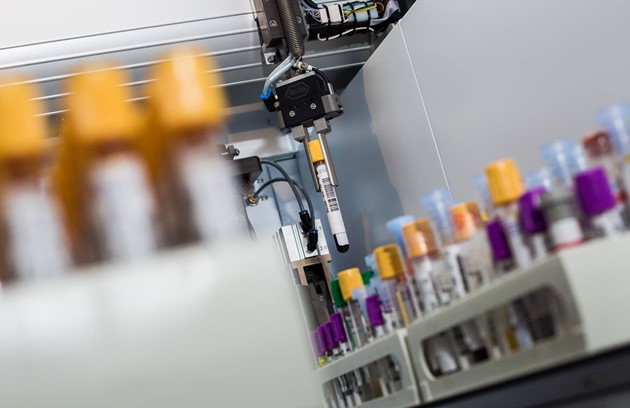A comprehensive test menu in public health laboratories is crucial for accurately diagnosing and managing a wide range of diseases. It enhances public health by providing timely and precise diagnostic information, guiding effective treatment, and informing public health strategies. This article explores the importance of a comprehensive test menu, the key components involved, and its impact on public health.
The Importance of a Comprehensive Test Menu
Improved Disease Detection and Management
A comprehensive test menu allows for the detection of a wide range of infectious and non-infectious diseases.
- Broad Coverage: Includes tests for bacterial, viral, fungal, and parasitic infections, as well as non-infectious diseases such as cancer and genetic disorders.
- Accurate Diagnosis: Ensures accurate diagnosis and appropriate management of diseases, reducing morbidity and mortality rates.
Timely Public Health Response
Rapid and accurate testing is essential for timely public health interventions.
- Outbreak Control: Quick identification of pathogens during outbreaks enables prompt public health responses to contain the spread.
- Surveillance: Continuous monitoring of disease prevalence and trends helps in early detection of potential public health threats.
Supporting Preventive Measures
A comprehensive test menu supports preventive healthcare by identifying risk factors and enabling early intervention.
- Screening Programs: Includes screening tests for early detection of diseases such as cancer and diabetes, allowing for timely treatment and improved outcomes.
- Vaccination Programs: Identifies individuals who would benefit from vaccination, aiding in the control and prevention of infectious diseases.
Key Components of a Comprehensive Test Menu
Infectious Disease Testing
Testing for infectious diseases is a critical component of a comprehensive test menu.
- Pathogen Detection: Tests for common and emerging pathogens, including bacteria, viruses, fungi, and parasites.
- Antimicrobial Resistance: Identifies antimicrobial resistance patterns, guiding appropriate treatment choices and informing public health strategies.
Genetic and Genomic Testing
Genetic and genomic testing provides insights into inherited disorders and genetic predispositions.
- Hereditary Diseases: Detects genetic mutations associated with hereditary diseases, enabling early diagnosis and management.
- Pharmacogenomics: Analyzes genetic factors that influence drug response, supporting personalized medicine approaches.
Cancer Diagnostics
Comprehensive cancer diagnostics are essential for early detection and effective treatment.
- Biomarker Testing: Identifies specific biomarkers associated with different types of cancer, guiding targeted therapies.
- Molecular Profiling: Provides detailed molecular profiles of tumors, aiding in the selection of personalized treatment plans.
Environmental and Occupational Health Testing
Testing for environmental and occupational health hazards is important for public health protection.
- Toxicology: Detects exposure to toxic substances, such as heavy metals and industrial chemicals.
- Occupational Health: Monitors workplace exposures to hazardous substances, ensuring compliance with safety standards and protecting worker health.
Benefits of a Comprehensive Test Menu
Enhanced Public Health Surveillance
A broad range of tests enhances public health surveillance capabilities.
- Real-Time Monitoring: Continuous monitoring of disease trends and patterns allows for real-time public health interventions.
- Data-Driven Decisions: Provides the data needed to make informed public health decisions and allocate resources effectively.
Better Patient Outcomes
Accurate and timely diagnostics lead to better patient outcomes.
- Early Intervention: Early detection of diseases enables prompt treatment, improving prognosis and reducing healthcare costs.
- Personalized Treatment: Genetic and molecular testing supports personalized treatment plans, enhancing treatment efficacy and reducing adverse effects.
Cost-Effective Healthcare
Comprehensive testing contributes to cost-effective healthcare delivery.
- Preventive Care: Early detection and management of diseases reduce the need for more expensive treatments later on.
- Resource Optimization: Efficient use of laboratory resources through a broad test menu minimizes unnecessary testing and maximizes diagnostic yield.
Challenges and Solutions
Ensuring Quality and Accuracy
Maintaining high quality and accuracy in a wide range of tests is challenging.
- Quality Control Programs: Implementing rigorous quality control and assurance programs ensures the reliability of test results.
- Standardization: Adopting standardized testing protocols and methodologies enhances consistency and accuracy across different laboratories.
Accessibility and Equity
Ensuring equitable access to comprehensive testing services is crucial.
- Outreach Programs: Implementing outreach programs in underserved areas to provide access to essential diagnostic tests.
- Subsidies and Support: Offering financial support and subsidies for testing services to ensure affordability for all populations.
Keeping Up with Technological Advances
Staying updated with rapid advancements in diagnostic technologies can be challenging.
- Continuous Training: Providing continuous education and training for laboratory staff on the latest diagnostic technologies and techniques.
- Collaboration: Collaborating with research institutions and industry partners to stay at the forefront of technological advancements.
Future Directions in Public Health Testing
Integration of Advanced Technologies
Integrating advanced technologies such as AI and machine learning will enhance diagnostic capabilities.
- Predictive Analytics: Using AI to analyze diagnostic data and predict disease outbreaks and trends.
- Automated Workflows: Implementing automation in laboratory workflows to increase efficiency and reduce turnaround times.
Expansion of Point-of-Care Testing
Expanding point-of-care testing will improve accessibility and response times, especially in remote and underserved areas.
- Portable Diagnostic Devices: Developing portable diagnostic devices for use in field settings to provide rapid and accurate testing.
- Telemedicine Integration: Integrating point-of-care testing with telemedicine services to enhance remote patient care.
Personalized Public Health
Personalized public health approaches will become more prevalent, leveraging genetic and molecular data.
- Genetic Screening Programs: Implementing population-wide genetic screening programs to identify individuals at high risk for specific diseases.
- Tailored Interventions: Developing personalized public health interventions based on individual risk profiles and genetic predispositions.
Enhancing public health with a comprehensive test menu is essential for accurate disease detection, timely public health response, and improved patient outcomes. By including a wide range of tests for infectious diseases, genetic and genomic testing, cancer diagnostics, and environmental health, laboratories can support preventive healthcare and effective disease management. Despite challenges related to quality control, accessibility, and technological advancements, ongoing innovations and collaborative efforts will ensure the continued evolution and effectiveness of public health testing. As the field advances, a comprehensive test menu will play a crucial role in safeguarding public health and improving global health outcomes.
